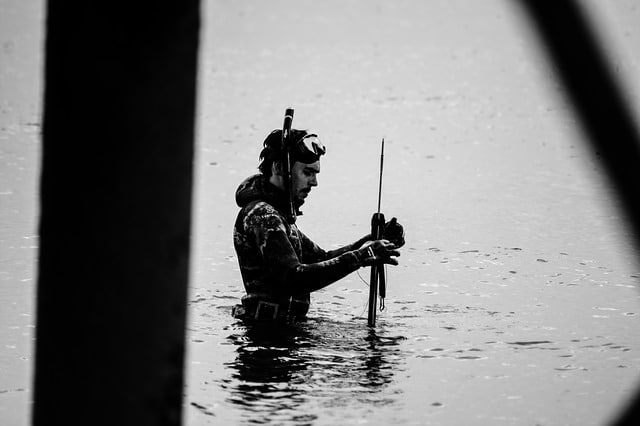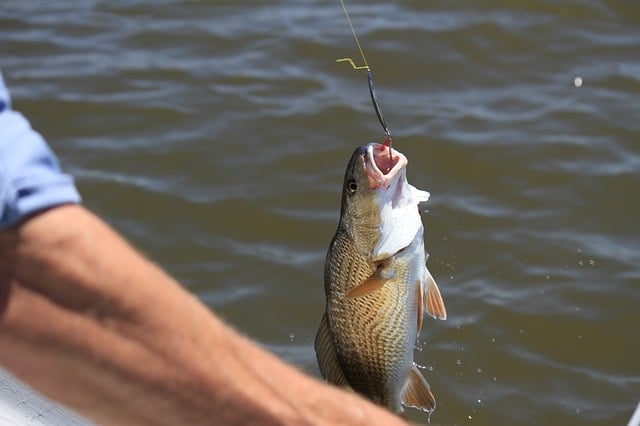That fish feel pain or not is a debate that has been ongoing for quite a while. There is hardly a consensus on whether they hurt or they don’t especially when they are unexpectedly caught in nets, with hooks, or speared with a harpoon. While on one hand many claim that these water-dwelling creatures do not feel pain, on the other hand, some hold the belief that fish feel pain albeit not the same way as humans do. That they momentarily feel the pain then do not process it further the way a human would do. In the middle of the debate, some hold the opinion that this doesn’t matter since fish caught are eventually going to die anyway. And as the debate rages on, the practice of fishing continues as well. After all, fish is a nutritious food that humans require. For starters, fish is an important source of protein. They are also a source of income and livelihood for millions of people across the world. Fish contains as many nutrients just as it is beneficial to the human body’s different functions as well. The question that therefore emerges and begs answers is whether fishing is detrimental to the fish.
Do fish really feel pain like other animals?
For this question, there is no definite answer. The circumstances around whether the debate holds water or not can be viewed from different perspectives. To start with humans as well as other animals have pain receptors called nociceptors which essentially are a collection of sensory neurons that contain specialized nerve endings and are widely distributed in the skin, muscles and joints, other deep tissues and other visceral organs. These nociceptors essentially receive and then transmit hurtful stimulation signals from different nerve endings to the brain, which in turn generally interpret them as pain.
While fish also have these receptors, there have been contended studies that indicate that in the fish these receptors are so miniature that they are only able to generate just an intuitive reaction, which in most cases is merely an unconscious reaction. Researchers including neurobiologists, behavioral ecologists and fishery scientists indicate that fish lack the neuro-physiological capacity for a conscious awareness of pain. They only respond to the pain stimuli in a sort of one-off way; getting away from the stimuli then immediately ‘forgetting’ that the pain happened. In other words, they lack conscious thought to further process what has happened to them. This way, they do not feel continuous ongoing pain after an injury. This would mean that the nociceptors in fish merely trigger reactions akin to actions like the urge to scratch or yawn in humans; which essentially felt then brushed aside or addressed then forgotten until they happen again later. This has been the premise of those who feel that fish do not feel pain therefore fishing isn’t harmful to them. The result has been sport fishing and hence the advent of the catch and release fishing activity.
Recreational fisherfolk in this case often catch the fish and probably pose for photographs with their catch before releasing them back into the water. But while this may seem like a noble thing to do as the fish are released back into their water habitats alive, the truth is that these fish often suffer the consequences of those few minutes that they were hunted and caught, and mostly die soon afterward despite being put back in the water.
Fishing actually harms the fish
Let’s look at it from this angle; the fishing gear, in this case, is often a hook or a harpoon. In the process of catching the fish, the hook has to poke the fish’s mouth as it (the fish) tries to eat the bait used to attract it. While the injury that the fish sustains, might not be painful as suggested by some studies, it hampers the fish’s feeding. The fish wouldn’t feed as well as it did before for as long as it remains alive. This lack of feeding eventually plays a role in the death of the fish. For one, no living creature survives for extended durations without good feeding. In other circumstances, the fish may swallow the hooks, and if they escape back into the water, they’ll not have long to live as other than the discomfort caused by the wire in their bellies, or a piece of broken harpoon lodged in its body, internal infections could occur and eventually death.

Furthermore, still in the catch and release scenario, the sudden yanking of the fish out of the water causes terror and trauma to them. Often, fish caught in this way are stunned or traumatized to death; that is if the shock and trauma per se aren’t painful enough experiences in themselves. Then there comes the actual suffocation that comes with the fish being taken away from their natural habitats. Fish are naturally adapted to breathe inside water. Plus they hardly get the recourse to train themselves to survive outside water as humans often do. They have gills that are meant for facilitating their breathing while in water. When unexpectedly snatched out of the water, fish begin gasping for air almost immediately.
Their gills would collapse blocking their breathing. Then due to the change in pressure, their air bladders would most likely burst. For larger and heavier fish, when caught and placed on the boat, this would mean putting their entire weight on some of their delicate internal organs. The organs would rupture or collapse and damage. The same would apply to humans but under opposite circumstances. While humans may not have such air bladders, when they’re suddenly submerged in water, their breathing would become problematic, then suffocation and death would be inevitable if this is sustained for longer.
Some modern fishing technologies cause even more damage
Further to this, fish often have a protective scaled membrane that protects them from elements such as infections and vermins within the water. When caught and taken out of the water, this protective membrane is often weakened by exposure to human hands and the outside environment. When the fish are released back into the water, they become vulnerable to the elements that they initially had protection against. An attack on the fish at this moment is always catastrophic. Researchers point out that fish caught then released back into the water often die roughly less than one week later; succumbing to the adverse effects inflicted during and after their being caught.
On a larger scale, fishing would be damaging to the fish in that the entire process captures all the fish regardless of whether they are targets or not. For instance, when using the available different fishing technologies such as purse seine nets, trawlers, dredgers, cyanide fishing, Muro Ami and use of explosives, the fish caught in the tumult would be many without consideration of whether they are all edible or not. Some caught will be discarded whether dead or alive. Others, on the other hand, will be lucky to not be caught but remain affected, injured and stressed in the water.
It is not uncommon to catch fish (especially the larger fish) and notice that they miss some of their body parts or have man-made objects such as darts and small harpoons sticking from their bodies. The nets used in fishing further have a damaging effect on the fish. Once the fish get entangled in them, especially in a situation where the gill cover is caught in the netting and unfortunately breaks off as the fish struggles to disentangle itself from the net, the result is a fish surviving with gills exposed to any dangerous elements that lurk in the depths of the waters. The different methods of fishing employed by fisherfolk may therefore be injurious to the fish in some ways.

